Uncategorized
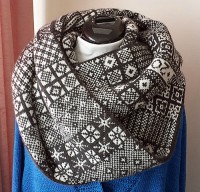 I posted about the Sanquhar Cowl by Wendy D. Johnson a while back. Even though I’ve been obsessing about it ever since, it hasn’t hit my needles yet, for two reasons. First, I’ve been working on other projects. Second, I haven’t had the available funds for the yarn. Well, progress is definitely being made on the existing projects, so the first reason may not be a factor any more. And, some wonderful friends gave me a gift card to WEBS for Christmas, so I may be able to afford a bit of a yarn shopping spree.
I posted about the Sanquhar Cowl by Wendy D. Johnson a while back. Even though I’ve been obsessing about it ever since, it hasn’t hit my needles yet, for two reasons. First, I’ve been working on other projects. Second, I haven’t had the available funds for the yarn. Well, progress is definitely being made on the existing projects, so the first reason may not be a factor any more. And, some wonderful friends gave me a gift card to WEBS for Christmas, so I may be able to afford a bit of a yarn shopping spree.
I’ve narrowed down the yarn options to three potentials, and now I’m stuck.
This is where you come in.
Requirements:
- fingering weight
- 1,500 yards (+extra) available in black
- 1,300 yards (+extra) available in white
- not going to bankrupt me
I understand that the fourth criterion is a bit nebulous, but each of the yarns listed here meet that requirement.
Working from least expensive to most, here’s what I’ve come up with.
Option 1: Cascade 220 Fingering
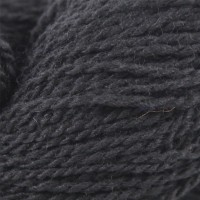
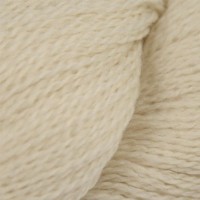 Cascade 220 Fingering provides 273 yards per each $4.75 hank. This works out to 1.74¢ / yard. Based upon the yardage required, I will need 6 hanks of black and 6 hanks of white, which will total $57.00 (pre-tax, pre-shipping).
Cascade 220 Fingering provides 273 yards per each $4.75 hank. This works out to 1.74¢ / yard. Based upon the yardage required, I will need 6 hanks of black and 6 hanks of white, which will total $57.00 (pre-tax, pre-shipping).
Pros: The most inexpensive yarn of the lot. Very much a known quantity. It looks to be pretty solidly in the ‘regular’ fingering weight range.
Cons: I’m not sure how soft it will be. And I seem to recall the yarn splitting pretty easily. The back is more dark grey than black, and the white is more cream than white.
Option 2: Cascade Forest Hills
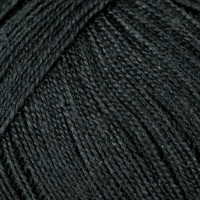
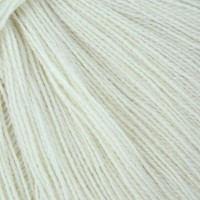 Cascade Forest Hills is a silk (51%) / merino wool (49%) blend that comes in whopping 785 balls for $20.00 each, resulting in a price-per-yard of 2.55¢. I will need 3 hanks each of black and white to meet the pattern requirements, for a total of $120.00 (again, pre-tax, pre-shipping).
Cascade Forest Hills is a silk (51%) / merino wool (49%) blend that comes in whopping 785 balls for $20.00 each, resulting in a price-per-yard of 2.55¢. I will need 3 hanks each of black and white to meet the pattern requirements, for a total of $120.00 (again, pre-tax, pre-shipping).
Pros: A lovely fiber blend, which will extend the wearability of the finished cowl beyond just winter. The black is black, and the white is white. Tremendous yardage means fewer loose ends. (This is not that huge of a deal, though, as the project is worked in the round and the loose ends can simply be tied off and ignored.)
Cons: I’ve never worked with this yarn before. This yarn is certainly pricier than the 220. I’m not 100% convinced this isn’t a light fingering, or even a lace weight yarn. (For lace work, that would be fine, but for colorwork, a lighter weight yarn is going to allow the behind-the-scenes stuff to show through, which is suboptimal.)
Option 3: Shibui Cima
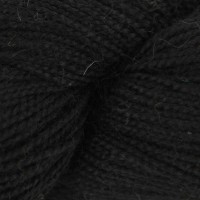
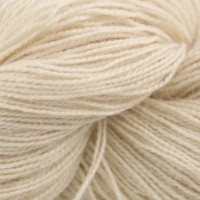 My most expensive option is Shibui Cima, a 70% super baby alpaca / 30% merino wool blend. Each $15.00 hank provides 328 yards of wool, which gives a price-per-yard of 4.57¢. I will need 5 hanks each of black and white, which results in a pre-tax / pre-shipping total of $150.
My most expensive option is Shibui Cima, a 70% super baby alpaca / 30% merino wool blend. Each $15.00 hank provides 328 yards of wool, which gives a price-per-yard of 4.57¢. I will need 5 hanks each of black and white, which results in a pre-tax / pre-shipping total of $150.
Pros: I did mention the baby alpaca, right? (Incredibly soft, for those not in the know.) The black is very very black.
Cons: Pricey. Nearly 3x as expensive as my cheapest option, and $30 more than my middle option. Again, I’m not 100% sure regarding the weight of the yarn: it looks a little thin. The white is more creamy than white.
Tell Me What You Think
So, those are my options. Part of me says that I should go with the 220, because: it’s my first serious colorwork project, so I should buy ‘working’ yarn instead of ‘showcase’ yarn; I’ve worked with it before and didn’t hate it; it’s clearly the proper weight needed for the project. But, on the other hand, I’m not sure I’m ever going to want to work this (very complex) pattern again, so shouldn’t I make the most of it?
What do you think? Or, do you have another yarn offered by WEBS that you’d like to throw into the ring? Tell me what you think I should do!

blue and white
If affordable, I would go with option 2.
I would skip the baby alpaca for color work unless you’ve touched the yarn in question. Depending in how the yarn/fiber is spun/constructed you could have Slippery, drapey, little to no spring. All would be an in necessary challenge for this project.
The 220 will soften with wash, use, wear, and abuse. It will never be “I wish this was pajamas” soft, it might become next to neck soft depending on the neck in question. But it will be the most durable finished project. It would be hard wearing with minimal pilling. It will look nice long term. There other options will tend to pill throughout their whole lives.
If you are concerned about itch with the 220, you might consider Cascade Heritage Sock. It’s a true fingering. I think you are right about forest hills being thin.
What about Cashfine? http://www.yarn.com/index.cfm/fuseaction/product.detail/categoryID/78B195A1-5B23-4F11-9533-631A4173E6BF/productID/B8923DBF-21D0-470C-943A-78BE66F31815/
My first reaction is the Forest Hills, but I agree that I think it is too thin. The 220 Fingering, (which, Dear Cascade, please stop calling all this other stuff 220 this and 220 that when they NOT 220. They
Or the Heritage Silk. Smooshy. And still great for colorwork, still the right weight, and also very black and very white. And (because and, and, and) great against the skin. And comes in at $109.20.
(Prices before the 20%/25% Webs discount)
Stephanie: I thought about the Cash Fine, but the reviews don’t leave me with warm fuzzies. And excellent point with regard to the alpaca. Since I don’t have any experience with it, I should probably skip the Shibui Cima. And yeah, I think the Forest Hill is too thin. The Cascade Fingering may be the route I go.
Missy: Oooh, the Heritage Silk looks pretty awesome, actually. Unfortunately, the white is backordered.
Everyone: What do you think of the Heritage Silk, with the black and grey? Not enough contrast?
The Heritage Silk really is delicious. You need to go pet some in person. I know your needles are itching, but I’d wait for the white even if it’s backordered. If I’m committing to this kind of colorwork, I’m waiting for my first choice of colors. But then, I’d probably be doing red and white were it me. (By the way, Marine Blue makes awesome Tardis socks.)
Do they have red instead of white? Black and red would rule.
Heritage or Heritage Silk would be great.
Jer: *giggle* That’s true. Stephanie did have a great point with regard to the baby alpaca, though. I haven’t knit with it before, and it might not be the best yarn for the project. :/
Jenn: They do! (Linked on this comment.) You can see both the black and the red here. Do you think there will be enough contrast between the two colors? (I know that sounds weird, but you know what I mean.)
Stephanie: Thanks for the confirmation with regard to the Heritage / Heritage Silk! I really like the idea of a silk component vs a nylon component (I know, there’s no reason for the preference, but it’s there).
So, I’m back to either Cascade 220 Fingering or Heritage Silk. I’ll call WEBS today and see when they can get Heritage Silk in white. If it’s an unknown variable, or is too far out for my impatient little brain, I may go with the black and red option. Decisions, decisions!
http://www.yarn.com/index.cfm/fuseaction/product.detail/categoryID/A6851465-EEFA-4EF6-A2AE-A3F6C1BA87A4/productID/EA2068E9-4A0C-4171-A468-E0900C037976/
You know what could be really great, is some thrift sweater merino. *wink, wink*. Holding 2-3 strands at a time would give you fingering.
Well…what did they say? When will it be in?
Stephanie: Good lord, woman. That’s like 9 bazillion sweaters! But yes, you’re right. Hrm. I’ll have to find out where the good thrift stores are.
Missy: I completely forgot about time zones! I shall call momentarily!
LOL. I havent really measured or counted yardage on the ones i’ve unravelled, but probably only 2 sweaters (1&1). I would be shocked if you’d need more than 4 (2&2). I could be way off, but there’s a crap ton of yardage in a mens fine merino sweater/shirt. Now i’m curious. I will put the question to the Unravelers group on Ravelry.
Missy: They do not have any information as to when they will have it in stock. They said that most of their backorders are restocked within 3-4 weeks, but that specific yarn is not on the “pending arrival dates” list. Foiled!
There’s WAY more than 1500 yards in a men’s fingering weight sweater.
I don’t think I’ve ever waited mote than 3 or 4 weeks for a backorder from Webs and mostly not that long.
Heritage Silk is hands down my vote.
I think that Red is bright enough to provide a nice contrast. Plus I know how much you hate anything in red and black. 😉
Jenn: *grin* True enough.
Everyone: I decided to go with the Cascade Yarns Heritage Silk, even if it means the backorder. Missy’s hearty endorsement combined with Stephanie’s agreement tipped the scales for me. I’ve also decided to go with the black and white. As much as Jenn has a point that I adore black and red, I haven’t entirely decided if I’m going to keep this project or give it away when I’m done, and black and white is a more suitable-for-everyone gift.
The WEBS – America’s Yarn Store order has been placed, and now I begin eagerly awaiting the yarn to come back in stock. In the meantime, I have plenty of projects to finish up (or, in many cases, start and finish).
Thanks so much for all of your input and help! I’m very excited, and very nervous about this project. It’s a huge commitment of money (ok, gift card), time, and those precious few brain cells I have for learning things. 🙂
YAY!! I’m sure you’ll love it. =)
<-- Waves sheepishly and whispers, "I am available for gift receiving". *grins absurdly* Actually I am pondering my own future cast on.
Stephanie: Hahahaha. If I decide not to keep it for myself, I’ll definitely keep you in mind. Hey! We could have our own little KAL! 🙂